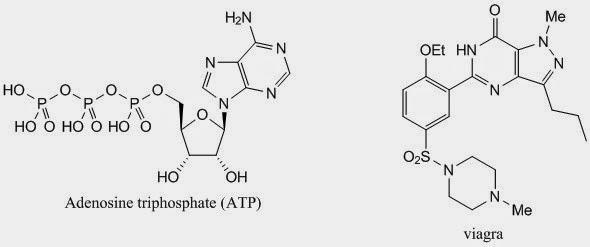Heterocyclic Chemistry: Structure
Heterocyclic compounds are very common feature in most of the known molecules, especially in nature. They can be found in DNA, alkaloids and vitamins but they also an important constituent of agrochemicals, pharmaceuticals etc. In this section, we will try to explore about the structure and their reactivity, especially as the basicity of heterocyclic compounds.
Heterocycles can be defined as cyclic molecules with at least containing one heteroatom (e.g. N, O, S - mainly group 15 and 16). Heterocycles can be classified as saturated and unsaturated heterocycles. The common saturated heterocylces can form 3-membered ring such as epoxide and aziridine.
4-membered ring of saturated heterocylces are less common but if we increase the ring size into 5-membered ring, it is quite common such as tetrahydrofuran and pyrolidone. Tetrahydrofuran is a common solvent in organic reaction. The 6-membered ring heterocycles are also common such as tetrahydropyran and piperidine. Tetrahydropyran is the "template" of cyclic monosaccharides,
One common features from all the saturated heterocycles is all atom in the ring are sp3 hybridised and the rings have defined conformations due to stereoelectronic effects. Furthermore, partially saturated heterocycles are also known such as tetrahydropyridine.
Another class of heterocylces is completely unsaturated compounds or heteroaromatic compounds, and in general there are 2 types of common heteroaromatic compounds based on the ring size. The first class is 6-membered heteroaromatic such as pyridine. The structure of pyridine shows that it has 6π electrons and it is consistent with the aromaticity based on the Huckel's 4n+2 rule. In N atom, it is p-orbital that contributes to π system while the lone pair electrons is perpendicular to π system. Hence, it does not involve in aromaticity.
The 1H-NMR of pyridine is consistent with its aromaticity properties. Three signals are observed for pyridine and the signals are in the aromaticity region (7-8 ppm). Comparing partially unsaturated pyridine, the signals are in alkene region.
Another evidence of pyridine aromaticity is its resonance energy, which is the difference of hydrogenation energy aromatic compound and its corresponding isolated double bonds. The value of resonance energy of pyridine is around 117 kJ mol-1 which is quite significant relative to benzene which is 150 kJ mol-1.
Another class of heteroaromatic compound is 5-membered rings heteroaromatic such as pyrrole and furan.
Pyrrole is also an aromatic with 6π electrons where in this case the lone pair electrons of N are involved in aromaticity. As all atoms in the ring are sp2 hybridised, this means the lone pair electrons are in p-orbital rather than in sp2 hybrid orbital. The same case also happens with the O atom in furan. Because O has 2 lone pair electrons, one of the lone pair electrons are in sp2 hybrid orbital and also in p-orbital.
Further evidence of its aromaticity is the signals in 1H-NMR of pyrrole and furan are in aromatic range (6.2 and 6.5 ppm for pyrrole, and 6.4 and 7.4 ppm for furan) compare to its partially saturated compound which in the range of alkene region. Besides that, the resonance energy of 5-membered ring is also consistent with the aromaticity but it is lower than pyridine for the resonance energy of pyrrole and furan (68 kJ mol-1 and 90 kJ mol-1 respectively).
Heterocycles can be defined as cyclic molecules with at least containing one heteroatom (e.g. N, O, S - mainly group 15 and 16). Heterocycles can be classified as saturated and unsaturated heterocycles. The common saturated heterocylces can form 3-membered ring such as epoxide and aziridine.
4-membered ring of saturated heterocylces are less common but if we increase the ring size into 5-membered ring, it is quite common such as tetrahydrofuran and pyrolidone. Tetrahydrofuran is a common solvent in organic reaction. The 6-membered ring heterocycles are also common such as tetrahydropyran and piperidine. Tetrahydropyran is the "template" of cyclic monosaccharides,
One common features from all the saturated heterocycles is all atom in the ring are sp3 hybridised and the rings have defined conformations due to stereoelectronic effects. Furthermore, partially saturated heterocycles are also known such as tetrahydropyridine.
The 1H-NMR of pyridine is consistent with its aromaticity properties. Three signals are observed for pyridine and the signals are in the aromaticity region (7-8 ppm). Comparing partially unsaturated pyridine, the signals are in alkene region.
Another evidence of pyridine aromaticity is its resonance energy, which is the difference of hydrogenation energy aromatic compound and its corresponding isolated double bonds. The value of resonance energy of pyridine is around 117 kJ mol-1 which is quite significant relative to benzene which is 150 kJ mol-1.
Another class of heteroaromatic compound is 5-membered rings heteroaromatic such as pyrrole and furan.
Pyrrole is also an aromatic with 6π electrons where in this case the lone pair electrons of N are involved in aromaticity. As all atoms in the ring are sp2 hybridised, this means the lone pair electrons are in p-orbital rather than in sp2 hybrid orbital. The same case also happens with the O atom in furan. Because O has 2 lone pair electrons, one of the lone pair electrons are in sp2 hybrid orbital and also in p-orbital.
Further evidence of its aromaticity is the signals in 1H-NMR of pyrrole and furan are in aromatic range (6.2 and 6.5 ppm for pyrrole, and 6.4 and 7.4 ppm for furan) compare to its partially saturated compound which in the range of alkene region. Besides that, the resonance energy of 5-membered ring is also consistent with the aromaticity but it is lower than pyridine for the resonance energy of pyrrole and furan (68 kJ mol-1 and 90 kJ mol-1 respectively).






Comments